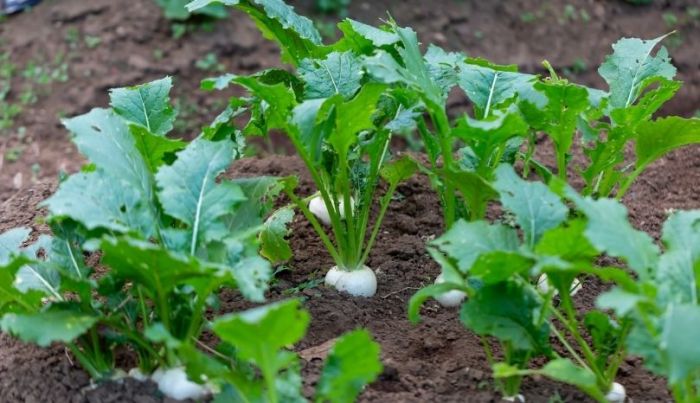Turnip: The purple diamond of our nutrition – how to grow it in your pot or garden
Do you know turnips? Maybe yes, but because they are generally unknown to many, let’s look at the “misunderstood” turnips, the way they are grown, their healing properties and their delicious secrets. Turnip or Brassica rapa, is a biennial herbaceous plant of the cabbage family. It is grown like cabbage, as it is a close relative. It originates from Siberia. Turnips were domesticated 40 centuries ago. Since then they are eaten, boiled, steamed, fried with beer, butter or fresh from the garden.
Gardening secrets: How to grow white eggplant in your garden

There are many varieties of it, which are distinguished by the shape, color and size of the roots. In its chemical composition it includes vitamins, carbohydrates, minerals and especially a rare substance glyukorafanin, plant “precursor” of sulforaphane, which has strong anti-cancer and anti-diabetic properties.
Turnip is a vegetable known since antiquity, however in many countries it is not one of the most popular vegetables. It is cultivated mainly for the swollen shoot or turnip root on which the leaves of the plant grow. Turnip is eaten raw or boiled and can be white-green or violet. The quality of the turnip depends on the size, shape and scars that the leaves have left on it. Its leaves, which are eaten in salads or boiled to accompany meat or fish, are also edible.

Black radish, and how to grow it in your garden
As far as its soil requirements are concerned, they do not differ significantly from those of the other crucifers, while for the turnip, good drainage is of particular importance. Turnip is more sensitive to cold than other crucifers and the optimum temperatures for its cultivation are 18-25οC. Sowing is done, as in other crosses, either in bed or directly in the field. If sowing has been done in bed, transplanting is done when the young plants have reached a height of 25-30 cm. Usually the seedlings reach this height after about 40 days. Planting is done in rows spaced 40-70 cm apart and the plants of each row are planted every 15-20 cm. The cultivation cares are the same as for the rest of the crosses. Irrigation and fertilization must be applied consistently and carefully. When there are periods when the soil is very wet and periods of drought, the turnip root is torn and wooded.

Turnip when it grows slowly or for some time stops growing, loses its quality. Carving and removing dry or infected leaves should not be neglected. The harvest is done while the turnip is still tender and the turnip root has acquired the appropriate size. This size varies depending on the variety and conditions of each area. However, the turnips from the plants that are harvested usually have a diameter of 5-10 cm.
How to grow Turmeric, the impressive plant that gives us a wonderful spice
When planting the turnip should not be completely covered with soil. It is usually left uncovered during ¼ to enhance its swelling.

















3 comments
[…] written by Eva – https://mydesiredhome.com/turnip-the-purple-diamond-of-our-nutrition-how-to-grow-it-in-your-pot-or-g…; […]
[…] micasadeseada […]
[…] post Turnip: The purple diamond of our nutrition – how to grow it in your pot or garden first appeared on My desired […]
Comments are closed.